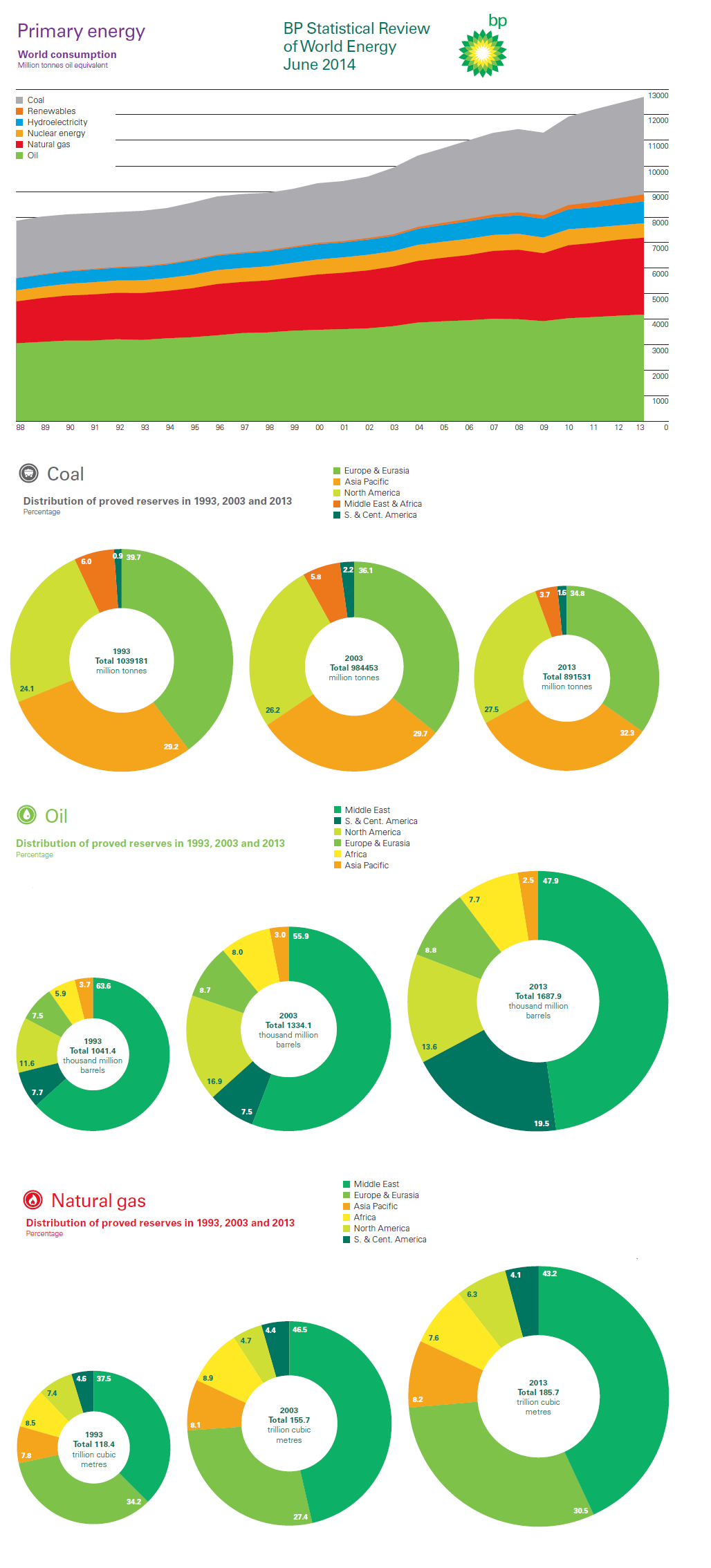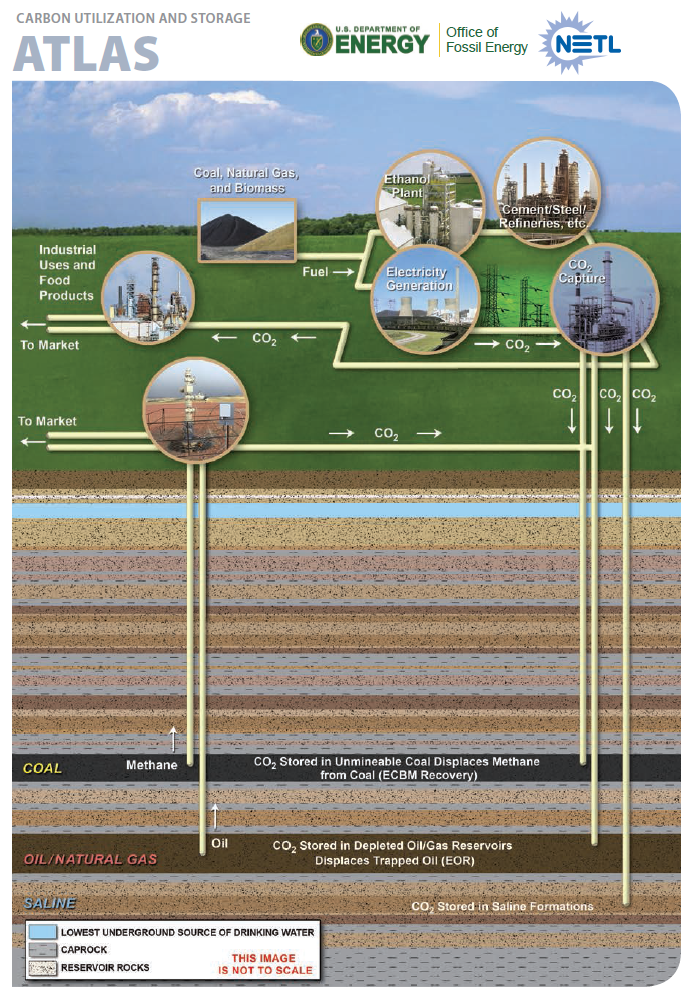Breaking Energy, July 2, 2014 (.pdf)
The Energy Collective, July 7, 2014
In the past I have been extremely skeptical of carbon capture and sequestration, CCS, but recently my opinion has evolved based on the sober conclusion that hydrocarbon fuels simply are not going away. Both supply and demand for coal, oil and gas continue to grow globally along with their carbon emissions and dangerous impacts on the Earth’s climate.
Debates over how to reduce carbon emissions and prevent climate change by using renewables, nuclear or natural gas amount to fiddling while Rome burns. In a world of growing energy demand we need all of these technologies but to keep from barreling past atmospheric carbon budgets by mid-century we need to physically capture carbon emissions and direct them to beneficial uses and appropriate disposal sites. The metaphor that we are using our skies as an open sewer to dump our carbon waste is precisely correct, and CCS is the sewer system.
The use of coal, oil and gas all are growing at a faster pace than any non-hydrocarbon energy sources can hope to compete with. Hydrocarbon reserves are incredibly vast and technology innovation continues to open up new resources all the time. The recent BP Statistical Review of World Energy lays clear the growth patterns. Consumption is growing of all energy resources globally except for nuclear, and while we have not discovered any new coal, proven gas and oil reserves have grown substantially in the last 20 years.[1] So much for the theory of Peak Oil, we just keep finding more. Renewables are growing, but are drowned by the scale of fossil fuels and barely make a dent relative to the overall growth in demand. Energy efficiency is always important, but again, it makes little difference in net emissions against a backdrop of surging overall demand.
CCS, the process of physically capturing and injecting CO2 underground for permanent storage rather than allow it to accumulate in the atmosphere is expensive, but the technology works and the best way to bring costs down is to deploy it. As economies of scale develop in the manufacturing and competition drives innovation we will see costs reduced. Utilizing CO2 for beneficial purposes improves the economics (sometimes the acronym is changed to CCUS). Sewers for human waste are also expensive, but the alternative is pestilence and disease so as a society we commit to building them first and then focus on cost reduction. We face a similar situation with climate change, we are forced to act. CCS is no silver-bullet, it is only part of the solution for climate change but it is a vital component.
China is our critical partner in these efforts. USA and China are the leading carbon emitters and the leading industrial powerhouses. China is aggressively pursuing advanced coal technologies and understands the need for CCS. The US Department of Energy has already invested billions in R&D to develop the technology while China has the manufacturing capability to quickly ramp up the scale and drive down the costs. Together, the USA and China can solve the technical and economic challenges of CCS and bring it to the rest of the world.
There are fears that CCS is dangerous, exposing populations to new dangers in the form of enormous pressurized CO2 bubbles seeking to vent and asphyxiate any who are unfortunate enough to be caught in the path. While understandable, these fears are misplaced. There is a wide body of geological literature describing how CO2 behaves when injected into saline aquifers, oil fields, shale, natural gas deposits and coalbeds. Each formation has its own characteristics for how the CO2 mixes and ultimately mineralizes. Research and practical experience demonstrate that we have robust safe storage capacity all around the globe to meet the demand for thousands of gigatons of sequestration[2]. For a more detailed look visit the NETL CCUS Atlas.
The good news is that CCS is not merely an expensive waste disposal exercise because a funny thing happens when CO2 is put into a pipeline, it becomes useful, valuable, a commodity. Capturing and pressurizing CO2 transforms it from an environmental liability into an industrial asset. For pipelines CO2 is typically pressurized to its supercritical state where it behaves as both a liquid and a gas simultaneously. Supercritical CO2 has a wide variety of industrial applications ranging from a solvent used for decaffeinating coffee to a working fluid in power turbines. But the killer app for supercritical CO2 is Enhanced Oil Recovery, EOR.
CO2-EOR is the injection of supercritical CO2 into oil fields after the production from conventional drilling has declined to help produce more oil and it is a proven method for permanent carbon sequestration. Though it may seem counter intuitive to sequester CO2 while producing more fossil fuels, CO2-EOR has earned ringing endorsements from a wide variety of leading environmental groups and is a rare point of agreement with fossil fuel producers. The Global CCS Institute, NRDC, EDF, Clean Air Task Force, and the Center for Climate and Energy Solutions have all come out in favor of CO2-EOR for CCS. The Department of Energy has invested billions of dollars to develop CO2-EOR and the EPA has explicitly endorsed it as part of the CCS mandates in the New Source Performance Standards for new coal power plants.
CO2-EOR has been practiced for 40 years in the USA. In the EOR industry CO2 is a valuable commodity that is in short supply. In any given oil field only about 30% of the original oil in place (OOIP) is recovered during conventional drilling, meaning that roughly 70% of the oil still remains in the ground in fields that have long been developed. Injected CO2 chemically mixes with oil to make it more viscous and flow better allowing recovery of another 15-20% of the OOIP. The EOR industry has sequestered hundreds of millions of tons of CO2 over the years, currently produces 300,000 barrels a day (6% of U.S. production) and has over 4000 miles of CO2 pipelines in operation. For each ton of CO2 sequestered roughly 2.5 barrels of oil is produced.[3]
Ironically, most of the CO2 used for EOR is sourced from natural underground deposits. The oil industry actually drills for carbon dioxide. But the available CO2 domes have largely been tapped and there is not much more supply available. Some CO2 is also sourced from industry, mostly from natural gas cleanup where CO2 would typically be vented. But most industrial sources of abundant CO2, particularly coal power plants, are too expensive for the EOR industry.
The price for CO2 the EOR industry can pay is about 2-3% of the price of oil. So at $90 per barrel of oil the industry can pay around $34 per metric ton of CO2 ($90/bbl * 2.0% = 2.25 $/mcf = $34/mt CO2) Price of carbon capture varies by facility but there is roughly $30-$40 per ton price gap between the cost of capture from a new build coal power plant (retrofits on old power plants are even more expensive) and the price the EOR industry can pay with today’s economics.[4] Smart policies are needed to bridge this gap.
The potential market demand for CO2 for EOR is massive. Industry experts Advanced Resources International who have been researching CO2-EOR for decades under contract to the DOE estimate that next-generation techniques could produce nearly 60 billion barrels of oil and sequester 15.2 gigatons of CO2 (1 gigaton = 1 billion tons). These numbers are very conservative though and only include conventional oil fields in the Lower-48 and not Alaska or the Gulf of Mexico. As the industry matures new opportunities are being discovered such as Residual Oil Zones (ROZ) that exist below and beyond conventional fields. Shale oil fields such as the Bakken in North Dakota have low productivity from current hydrofracking methods and it is believed that CO2-EOR could dramatically increase production there.[5] 15.2 gigatons of CO2 sequestered correlates to all the CO2 produced from 126 one GW sized coal power plants for the next 40 years. The USA has roughly 300 GW’s of coal fired capacity today. Sequestration capacity and oil production could be doubled or more with industry expansion.[6]
The story does not end with oil, enhanced natural gas recovery is also favorable as CO2 is heavier than methane and displaces natural gas taking its place in the geological formation. Coal beds absorb CO2 in an advantageous manner and unmineable coal offer another opportunity to produce methane while absorbing CO2. The potential natural gas quantities produced from these advanced methods is purely speculative but are certainly huge[7]. Just as hydrofracking shale unlocked massive new supplies of oil and gas and was a game-changer in the energy markets, the use of supercritical CO2 as a production fluid could be next big thing if we can put policies in place to help overcome the price gap for capturing the CO2.
CO2-EOR does not offer sufficient storage for all of the USA’s current carbon emissions which are over 3 billion metric tons per year. And many climate activists are quick to argue that using CO2 to produce more oil and gas is no help at all in reducing CO2 emissions. To be truly effective saline aquifers need to be used to maximize CO2 storage. There is storage capacity in the saline aquifers for thousands of billions of tons of CO2, an order of magnitude larger than the oil, gas and coal fields. But EOR provides the critically important financing mechanism to bring the industry to life, and has already been the proving ground to develop the technology and pipeline infrastructure. Secondly, the world is producing every last drop of oil possible already, exploring ever more sensitive landscapes in deep-water, the arctic and elsewhere. Reworking old oil fields offers obvious environmental benefits over exploring new virgin territory.
Perhaps even more importantly CO2-EOR reduces the need for oil imports. As we watch the Middle East go up in flames and our policies in the region collapse into a smoldering heap of rubble, blood and chaos we must ask ourselves as Americans, when will have had enough war before we decide to pursue North American energy security? The only consistent energy policy the USA has had over the last 35 years has been the Carter Doctrine which says that the USA will use military force to defend the Persian Gulf and our access to Middle Eastern oil. Yet there are ample resources in USA, Canada and Mexico that North America can be an energy exporting region and not be dependent on hostile foreign countries. We need to ramp up North American energy production across the board while at the same time diversify away from oil imports used for transportation in order to end our strategic dependence on Middle Eastern oil supplies.
USA is the champion of technology innovation, we invented CO2-EOR and hydrofracking. We invented oil and gas drilling, nuclear power, solar panels and the electric grid. We must succeed with CCS and CO2-EOR if we are to put a cap on carbon emissions and end our godforsaken Middle East wars even as we pursue renewables, efficiency, nuclear and other low carbon energy technologies. We need to commit to CCS now, the longer we wait the harder the job will be.
[1] BP “BP Statistical Review of World Energy”, report (2014)
[2] Department of Energy NETL, “Carbon Utilization and Storage Atlas IV 2012”, report (December 2012)
[3] ARI, “Improving Domestic Energy Security and Lowering CO2 Emissions with “Next Generation” CO2-Enhanced Oil Recovery (CO2-EOR)”, DOE/NETL-2011/1504, report (June 2011)
[4] NEORI, “Carbon Dioxide Enhanced Oil Recovery: A Critical Domestic Energy, Economic, and Environmental Opportunity”, report (February 2012)
[5] EERC “Concepts for CO2-EOR in the Bakken Formation”, presentation (December 13, 2013)
[6] ARI “Improving Domestic Energy Security and Lowering CO2 Emissions with “Next Generation” CO2-Enhanced Oil Recovery (CO2-EOR)”, DOE/NETL-2011/1504, report (June 2011)
[7] Department of Energy NETL, “Carbon Utilization and Storage Atlas IV 2012”, report (December 2012)

